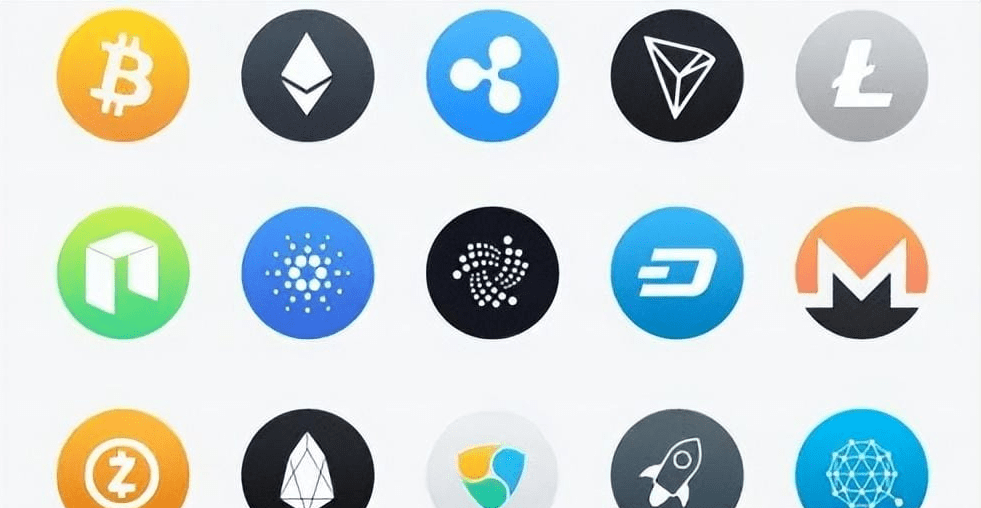First of all, digital currency investment is financial investment. To achieve sustained profits and double your money within a certain timeframe, you need to adopt the right strategies.

But if you always expect to get rich with a single contract, watching the rise and fall every day, like betting on odds, you might as well just play scratch cards.
Besides waiting for opportunities, trading requires the ability to distinguish the magnitude of opportunities; you can't always trade with a small position or a heavy position. Usually, trade with small positions, and when a big opportunity arises, then pull out the big guns.
For example, rolling positions can only be operated when big opportunities arise. You can't keep rolling; missing out is okay because you only need to roll successfully three or four times in your life to go from zero to hundreds of thousands or even millions. Millions are enough for an ordinary person to transition into the ranks of the wealthy.
By understanding, it can generally be divided into the following types of logic.
First, rolling positions; applicable for small and medium funds.
Spot trading.
Assuming you only have $1,000 today, and Bitcoin is currently at $30,000. If you believe Bitcoin is about to rise, if you invest $1,000 and it rises to $36,000, you earn $200. Since you only had $1,000, the doubling price would only yield you $200.
So the goal for small funds is to trade contracts.
Assuming you also believe that Bitcoin is about to rise by 20% * 5, your $1,000 will earn you another $1,000.
But have you heard, advising people on contracts and whatnot?
Because contracts are not just played randomly; there are ways to use small amounts to achieve big returns.

Actually, rolling positions only requires attention to these points:
1. Enough patience; the profits from rolling positions can be enormous. As long as you can roll successfully a few times, you can earn at least tens of millions to hundreds of millions, so you can't roll easily; look for high-certainty opportunities.
2. High-certainty opportunities refer to situations where there is a sharp drop followed by lateral consolidation, then a breakout upward. At this time, the probability of following the trend is very high, so find the reversal point to get on board right from the start.
3. Have patience; wait for opportunities, even if they come once a month or every few months—just keep rolling.
▼ Rolling risk
Let’s talk about rolling strategies; many people think this is risky, but I can tell you, the risk is very low, far lower than what you play in futures.
If you only have $50,000, how do you start with $50,000? First, this $50,000 must be your profit. If you are still losing, don't look further.
If you open a position when Bitcoin is at $10,000, set your leverage to 10 times, and only use 10% of your total capital, that is, only opening $5,000 as margin, this is actually equivalent to 1x leverage, with a 2% stop loss. If you hit the stop loss, you only lose 2%, just $1,000. How did those who got liquidated end up losing everything? Even if you were liquidated, wouldn’t it just be a loss of $5,000? How could you lose it all?
If you're right and Bitcoin rises to $11,000, you continue to open 10% of your total capital, also setting a 2% stop loss. If you hit the stop loss, you still earn 8%. Where's the risk? Didn't they say the risk is substantial? This continues...
If Bitcoin rises to $15,000 and you increase your position successfully, in this wave of 50% market, you should be able to earn around $200,000. Catching two such waves would be around $1,000,000.
There is no such thing as compound interest; 100 times profit is made by 2 times 10 times, 3 times 5 times, or 4 times 3 times, not by compounding 10% or 20% daily or monthly—that's nonsense.
This piece of content not only has operational logic but also contains the core trading mindset, position management. As long as you understand position management, you will never lose everything.
This is just an example; that's the general idea. The specific details still need you to ponder.
The concept of rolling positions itself carries no risk; not only does it carry no risk, but it is also one of the most correct approaches to futures trading. The risk lies in leverage.
10x leverage can roll, and 1x can too; I usually use two or three times. Grabbing two times is the same as earning dozens of times, right? If worse comes to worst, you can use 0.x leverage; what does that have to do with rolling? This is clearly your choice of leverage; I have never said to use high leverage to operate.
Moreover, I always emphasize that in the crypto space, only invest one-fifth of your money, and only invest one-tenth of your spot funds in futures. At this time, the funds in futures only account for 2% of your total capital, and use only two or three times leverage, focusing solely on Bitcoin. This can reduce risks to an extremely low level.
If you lost $200 out of $10,000, would you feel the pain?
Overall, with small investments to achieve big returns, endure loneliness, find opportunities, and learn position management. As long as you’re not unlucky, you will always have opportunities. Opportunities are for those who think; relying purely on luck will result in you earning as much as you lose, ultimately returning to square one.
Many people have misconceptions about trading, for example, that small funds should do short-term trading to grow their capital. This is a complete misunderstanding; this mindset is merely trying to exchange time for space in hopes of getting rich overnight. Small funds should actually focus on medium to long-term strategies.
First, honestly accumulate coins.

Stably hold spot assets for 3-10 years.
Accumulate the right assets, and you won't be impoverished.
What is the best asset in the crypto world? Anyone in the crypto community knows; there's no need to choose.
Second, when you have a certain amount of capital.
With capital, we indeed touch futures less often because I fear you can't resist the temptation of thinking about making a billion with a million. The idea is good, but very dangerous. Remember, we only use the money we've earned to make money and pursue stability. Stability is not an absolute 100%, but rather a relative overall profit over a period.
This is spot trading and capital management.
▼ Capital management
Trading is not filled with risks; risks can be mitigated through capital management. For example, I have a futures account with $200,000 and a spot account ranging from $300,000 to over $1,000,000. If the opportunity is significant, I invest more; if not, I invest less.
With good luck, you could earn over ten million RMB in a year, which is more than enough. If luck is bad, the worst-case scenario is a futures account liquidation. It doesn't matter; the profits from spot trading can compensate for the losses from futures liquidation. After compensating, you can jump back in. Is it even possible that you can earn nothing from spot trading in a year? With this kind of capital, it's impossible that we haven't reached that level.
You can afford not to make money, but you cannot afford to lose money, which is why I haven't been liquidated for a long time. Additionally, I often save a quarter or a fifth of the profits from futures separately. Even if it gets liquidated, some profits will still be retained.
As an ordinary person, my personal advice is to use one-tenth of your spot position to play futures. For example, if you have $300,000, use $30,000 to play. Once you expose your profits, reinvest them into spot trading. After you’ve been liquidated ten or eight times, you’ll surely grasp some insights. If you haven’t figured it out, don’t play; this industry isn’t suitable for you.

Three, core logic.
Just entering the crypto space, it's best to see how those popular bloggers interpret the candlestick charts, analyzing everything live—what bullish engulfing, what morning star.
These attract newcomers; individual investment in the crypto space has a low technical ratio. It doesn't hurt to understand, but it can't determine your rise or fall (unless you're a market maker; besides, no matter how good your technique is, can you outperform the financial talents hired by market makers with monthly salaries of over ten thousand?).
Real skills are position management, market information, market sentiment, and fear and greed levels.
We receive positive news and then analyze whether this positive news can be utilized (this indeed requires experience and time accumulation; novices cannot achieve rapid success). If we confirm that we want to trade this coin, how do we determine the entry point and manage our positions?
It's simple; when the news comes out, out of a thousand people, 300 will ask if BTC can be traded. At this time, it's great—when those 300 ask if they should sell, the other 700 are asking if they can enter now.
His fear level has risen, and the greed level has also peaked; this is another market sentiment signal.
You can't understand these things just by looking at charts or reading news; by the time you're reading the news, it's already too late.
Opportunities are here; assets can double! Follow Biao Ge and easily earn big money.
Continuously monitor: IOTX, ATM